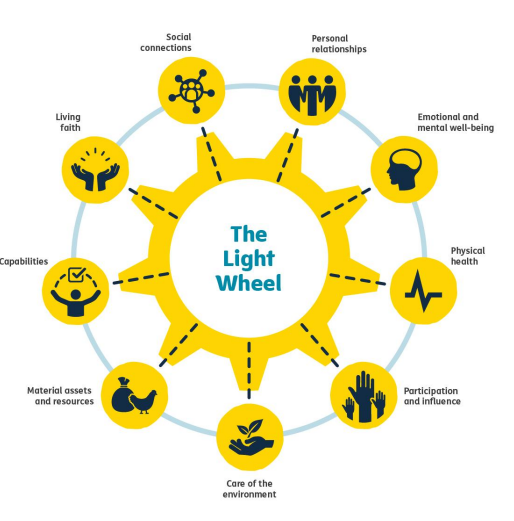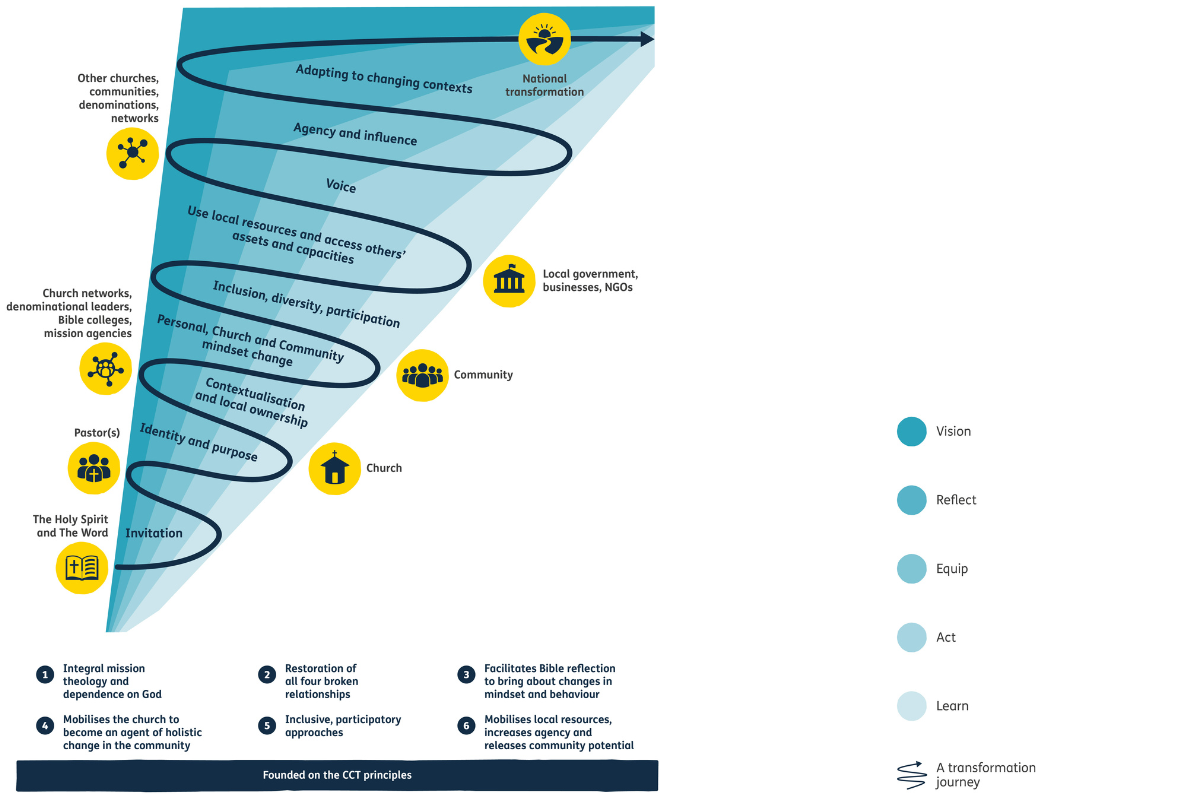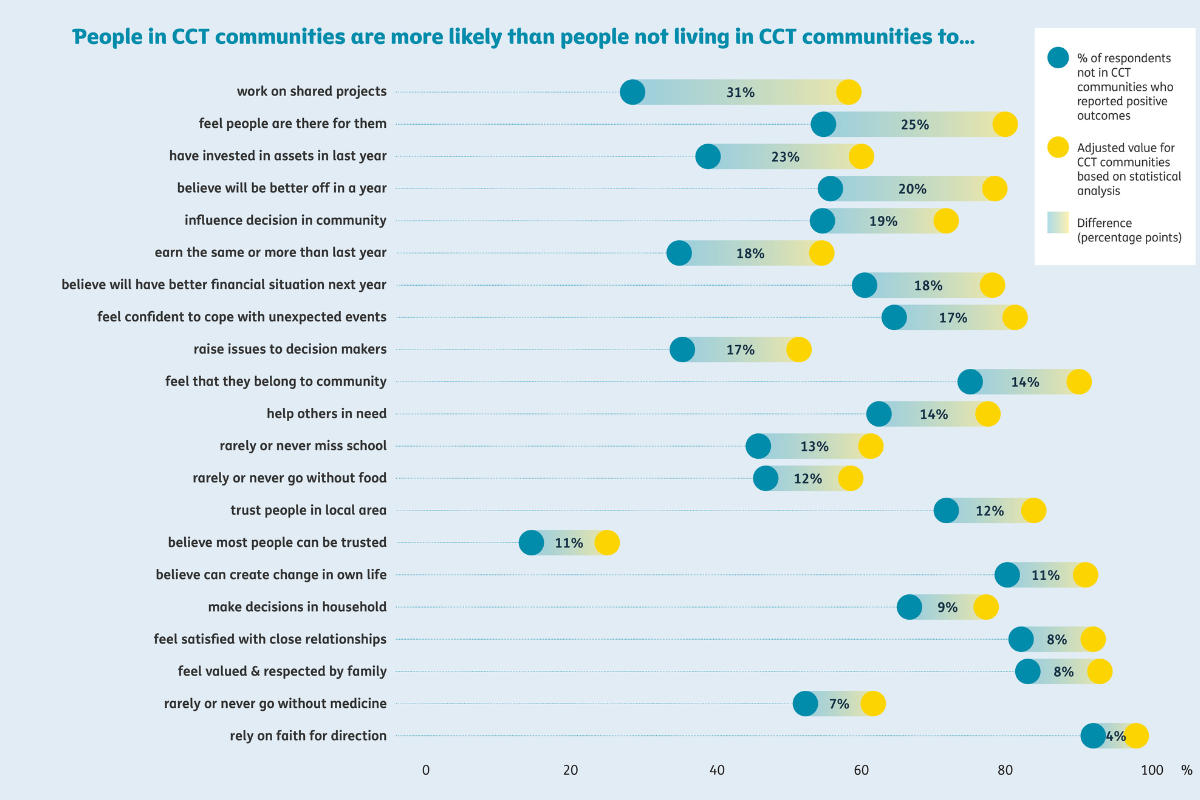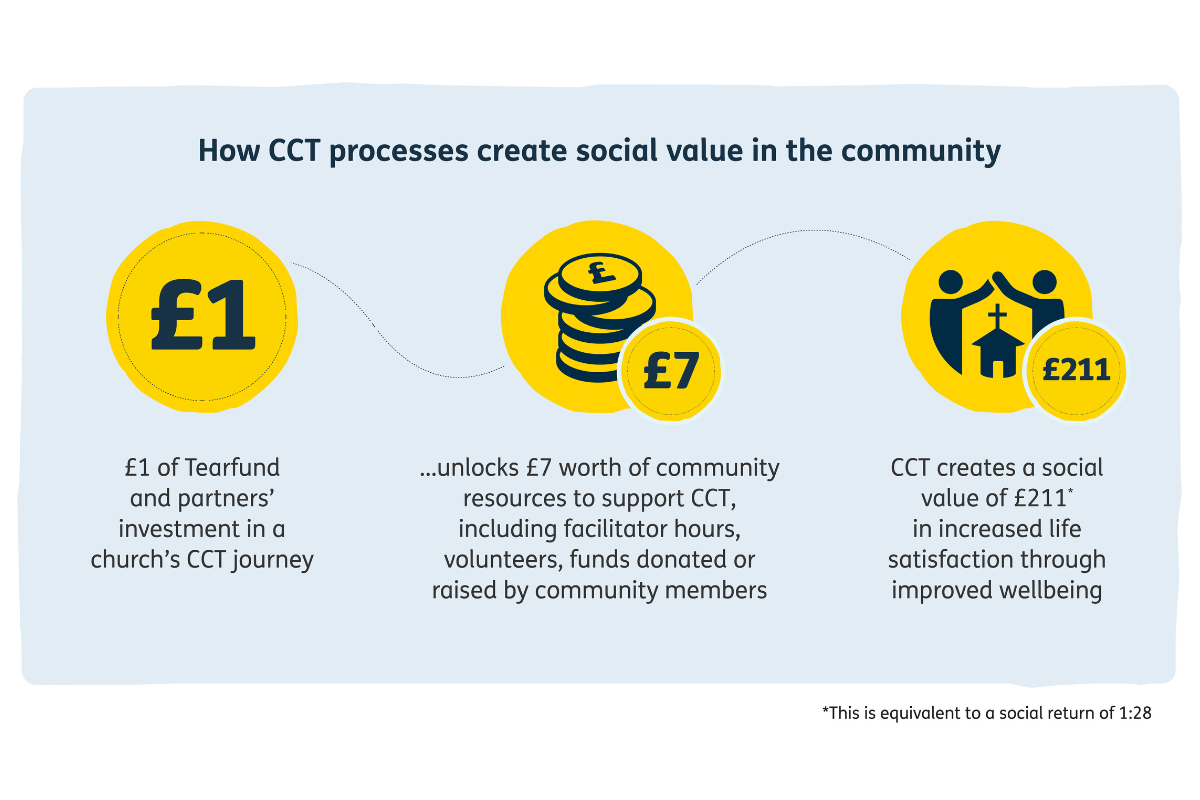Tearfund’s pioneering approach to international wellbeing measurement
Evaluating a programme’s wellbeing impact is the basis of evidence-informed practice. It is a vital part of understanding its success and evolving design and delivery.
In the UK, wellbeing measurement is well-established and often embedded within funding conditions for VCSE organisations alongside more tangible economic metrics. In contrast, measuring wellbeing is only now gaining recognition in the international development community.
Here, Tearfund’s Bethany Sikes outlines the charity’s largest ever impact study, which pioneered the adaptation of the WELLBY approach to contexts outside of the UK, and explores the wider implications for wellbeing measurement.
Tearfund is a Christian relief and development agency. For over fifty years we have been gathering evidence on the value of working with local churches across the world to address poverty and bring transformation to communities.
In 2022 we commissioned our largest ever impact study to understand what difference churches participating in our Church and Community Transformation (CCT) process were making to the wellbeing of their communities, and to understand the value of this transformation.
Led by independent wellbeing and social value specialists, State of Life, we carried out a study that was pioneering, with results that were credible, consistent and compelling.
Pioneering
This study is the culmination of years of work on a holistic wellbeing measurement, stemming from Tearfund’s understanding of poverty as a result of broken relationships: with God, self, others and environment.
Our research pioneered the adaptation of the WELLBY approach, outlined in the HM Treasury Green Book supplementary guidance on wellbeing, to calculating the social value of increased wellbeing to lower income contexts outside of the UK. We believe that this research is the first time the WELLBY methodology has been used in African contexts.
This research was heavily inspired by the Light Wheel, a framework and set of tools developed by Tearfund to understand, achieve and measure holistic wellbeing.

For more information about how the Light Wheel and the WELLBY informed this research, check out this practice example and blog.
Credible
Our sample includes almost 8,000 respondents across 230 communities in four countries (Rwanda, Sierra Leone, Tanzania and Zimbabwe). We used random sampling to identify communities participating in CCT and control communities. Our control communities had been selected to start CCT in the near future but had not started the process at the time of data collection.
Our survey includes questions from existing validated surveys, such as the World Values Survey, to maximise comparison with other data sources.
Our results were peer reviewed by an economic adviser at the UK Government Economic Service.
Consistent
We measured 23 wellbeing outcomes. They were all consistently higher for people living in CCT communities, and particularly for those taking part in the CCT process, than for people living in communities where CCT has not started yet.
The findings validated our theory of change for CCT, with higher wellbeing associated with participation, participating for longer and more frequently.

Our research shows that wellbeing is higher in communities just getting started with the CCT process than in communities not participating. This is sustained for communities that have been engaging in CCT for three to five years and more than five years.

Compelling
Our research found that the value of higher life satisfaction exceeds the resources, time and money invested in the CCT process by Tearfund, partners, facilitators and communities, by as much as 28 times.
Every £1 invested by Tearfund and partners in churches helps the community to unlock a further £7 in time and resources for shared projects. This ultimately creates £211 in social value in terms of improved wellbeing. This is equivalent to a social return of 1:28.

CCT is a locally owned process. Communities use the Light Wheel to assess their needs and plan activities, putting in their own resources to shape their own paths to greater wellbeing. We estimated these financial and in-kind resources (like food and building material) are worth between £2,180 and £3,270 per community, per year.
What does this mean for promoting and measuring wellbeing?
- Wellbeing matters in lower income contexts
Wellbeing measurement in international development is valuable and an essential tool for the sector in monitoring and evaluating its work. The inclusion of wellbeing in one of the 17 global Sustainable Development Goals speaks to its growing importance in the sector: SDG 3: Ensure healthy lives and promote wellbeing for all at all ages.
It is important to use standardised international wellbeing indicators and scales as far as possible, adapting the language where necessary.
- Wellbeing is multidimensional and includes spiritual aspects
Based on our understanding that poverty is multidimensional and wellbeing is holistic, we recommend that wellbeing and international development specialists consider aspects of wellbeing and poverty in their research and analysis beyond the economic, including not only the social and personal domain, but also the spiritual.
- Churches can make a difference
With appropriate envisioning, training and support, the church can be effective in bringing positive transformation to communities. Our research has shown evidence of sustainable change for individuals, church congregations and communities taking part in a CCT process, providing a high social return. In economic, personal, social and spiritual areas of life, CCT communities are better off than communities that have not started CCT yet, and these benefits are experienced early in the CCT process. We think this makes churches hidden ‘superheroes’ in international development, too often overlooked as agents for change in working with their communities. Tearfund is working to change this through sharing the results of this study, and expanding the church and community transformation process to thousands more churches.
This is just year one of a multi-year study, and we will be repeating the study in up to four new countries this year. Stay tuned for more evidence!
Find out more about the Local church, lasting transformation research study and Tearfund’s work.
